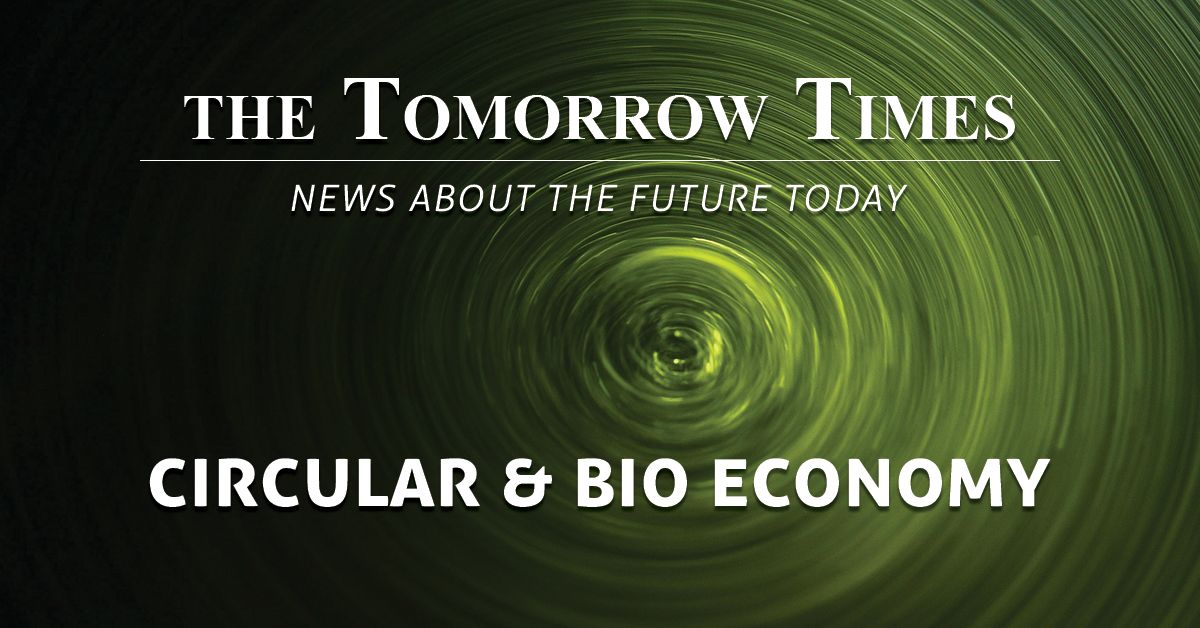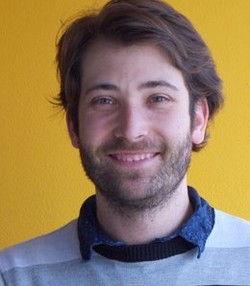This month, the Tomorrow Times investigates the world of the circular economy and bio-based products. Imagine businesses and societies which not only produce zero waste, but also enable industries to give back more than what they take from the environment through innovative technologies and business models. Alongside changes in regulatory systems and individual behaviours, the implementation of circular solutions lies at the heart of sustainable progress.
The call for a circular, bio-based economy is getting louder and louder. An ever increasing number of citizens, businesses, and policy-makers are realizing that reusing products and reclaiming natural resources is of vital importance for ourselves and for the planet we inhabit.
In a circular society, material consumption follows a closed-loop flow, where renewable resources and waste streams are used for new bio-based materials. In such a society, products are also reused, repaired, recycled, and remanufactured. Along the whole life cycle, choices that aim at circularity must be made as based on technological, environmental, and economic principles - Designing Sustainable Technologies, Products and Policies.
Follow these periodical monthly updates of tomorrow’s sustainability news today, by subscribing to the Tomorrow Times.
Circular & Bio Economy
- A Zero Waste hierarchy for Europe. New tools for new times to transit from waste to resource management. The driving force of the waste management hierarchy is not only the safe disposal of our waste but also to ensure that the value of our resources is preserved. By influencing consumption habits, rethinking business models and making them waste-free by design, circularity can be achieved.
- European consortium for a circular economy. Leading waste management companies, technology developers and research organisations have teamed up with four European cities to demonstrate innovative solutions to transform urban biowaste into high value-added products. These activities will be carried out during the four year project SCALIBUR - Scalable Technologies for Bio-Urban Waste Recovery - helping cities to increase their recycling rate and creating new circular economy business opportunities.
- Digital roadmap for a circular economy. The digital revolution has the power to transform our economy and society. Data and digitally-enabled solutions like digital platforms, smart devices, artificial intelligence, and the Internet of Things are already contributing to the circular economy. They are used, inter alia, to improve the use of natural resources, design, and production. The document ‘Digital Roadmap for a Circular Economy’ introduces several key recommendations for EU policymakers, paving the way for a more extensive study, scheduled to be published in autumn 2019.
- Are bio based materials and fuels the solution for the future? A wide range of natural materials are investigated to replace polluting ones. In particular, plastic waste and the effects of single use packaging are currently topping the agenda in political and business forums. Plastic products have become an integral part of almost every area of life, the main advantages are long products life, light weight, cheap, and maximum hygiene standards. The potential of new bioplastics is enormous. Coca-Cola’s ‘Plant Bottle’ is an example of packaging made partially from bio-based PET derived from sugar cane residue. Also emerging new biofuels obtained from sustainable biomass are at an advanced stage of development, promoted by the EU policies with a 10 years investment plan.
- Taking action, the use of plastic. The circular management of plastic plays a central role: this will be the main topic at K 2019, the world´s flagship fair for plastics and rubber, which will be hosted from 16-23 October 2019 in Düsseldorf, Germany. Recently, Canadian Prime Minister Justin Trudeau announced that “Canada will ban harmful single-use plastics as early as 2021 in a bid to reduce ocean waste.” Canada is hardly alone. The EU and other nations passed similar legislation last year.
Energy & Environment

- How much plastic do we ingest? A new study estimates that annual human consumption of microplastics ranges from 39.000 to 52.000 particles depending on age and sex, with emerging evidences in terms of toxicity and epidemiology. These estimates increase to 74.000 and 121.000 when inhalation is considered.
- How to make biodegradable 'plastic' from cactus juice. This Mexican researcher has discovered a way to turn cactus leaves into a material with similar properties to plastic. She says it's "not toxic and is biodegradable" See this film by Tom Heyden.
- Tackling the plastic pollution. A new report describes the environmental impact, and damage to livelihoods in terms of sickness and mortality that plastic pollution is causing. The report also show ways forward, outlining the roles and responsibilities of four key groups to tackle the plastic pollution crisis.
Business & Economy

- Benetton to use 100% sustainable cotton by 2025. 100% of the cotton used by Benetton Group will be either organic, recycled, or sourced from Better Cotton Initiative (BCI) farmers by the year 2025. An example that can inspire more action within the apparel industry.
- Nike launches a guide to sustainability for brands. Nike recently partnered with Central Saint Martins to create a manual for designers that lays out the principles of circular design, along with case studies from companies that have done groundbreaking work on these fronts.
- London students present sustainable designs. Many designer houses are seeking to improve their green credentials to appeal to increasingly environmentally conscious consumers. This year, the Royal College of Art annual ‘All At Once’ fashion show focuses on the fashion industry’s environmental impact.
Science, Technology & Design

- Designer brings rare corn back from the brink of extinction. Mexican designer Fernando Laposse developed Totomoxtle, a marquetry material made from the colourful husks of heirloom - an endangered species of maize.
- France is set to ban retailers from destroying unsold non-food items. The ban, which would apply to products such as clothes, cosmetics, and electrical items, would force companies to either recycle the goods or donate them to charity. Some €650 million worth of unsold consumer products are currently thrown away or destroyed in France each year, according to the prime minister’s office.
- Development of 100% bio-based chemicals for paper and cardboard production. Kemira – a Finnish chemical group – has announced that it has joined a four-year EU funded project which aims to develop 100% bio-based chemicals, produced from renewable raw materials. The project also aims to develop new means to improve production efficiency.
Urban Environment

- Could the roads of the future be bio-based? Bitumen is a by-product of oil production and is used to bind the surfaces of paved roads. Some researchers, concerned about its environmental impacts and future supply of petroleum, have started to develop bio-based alternatives. The world's first bio-asphalt cycle path was built in June 2017 on the campus of Wageningen University.
- Architects and designers, vital in the shift to circular economy. Circular economy champion Ellen MacArthur has called on designers to help transform the global economy along sustainable lines. "I would encourage designers to think about how the creative process can build something much broader than their product, and how their product can fit in that much broader restorative system," she said.
- Towards Adaptive Circular Cities. Five examples from cities like Berlin, Germany, and Malmö, Sweden, show how circular urban planning could make like healthier and safer for all of us. A manual which set the guidelines for a sustainable urban environment was published in 2015 by the leading Dutch institutes for applied research.
Unexpected and Intriguing

- In Denmark kayaking is free if you pick up floating trash. Volunteers are required to work for their trip by collecting floating waste. The initiative is the brainchild of GreenKayak, a Denmark-based environmental not-for-profit with a mission to clean up the continent’s canals, rivers and lakes - Video.
- An off-grid toilet closes the loops. LooWatt is a toilet that can be flushed without the need for any water, safely disposing of human waste to be turned into electricity and fertiliser.
- The soil cycle. How to convert the problem of atmospheric carbon into a solution? Regenerative forms of agriculture such as agroecology, agroforestry, cover-cropping, holistic grazing and permaculture allow us to store excess carbon safely in the ground. Watch this video narrated by Michael Pollan.
- Aquatic drone to collect garbage. This aquatic drone can collect garbage for 16 hours a day from urban waters, to stop it reaching the oceans. It can move around autonomously and doesn't leave a carbon footprint - Video.
Have you seen a news item suited for 'The Tomorrow Times'? Let us know and we'll consider including it in the next edition.
Aug. 7, 2019

